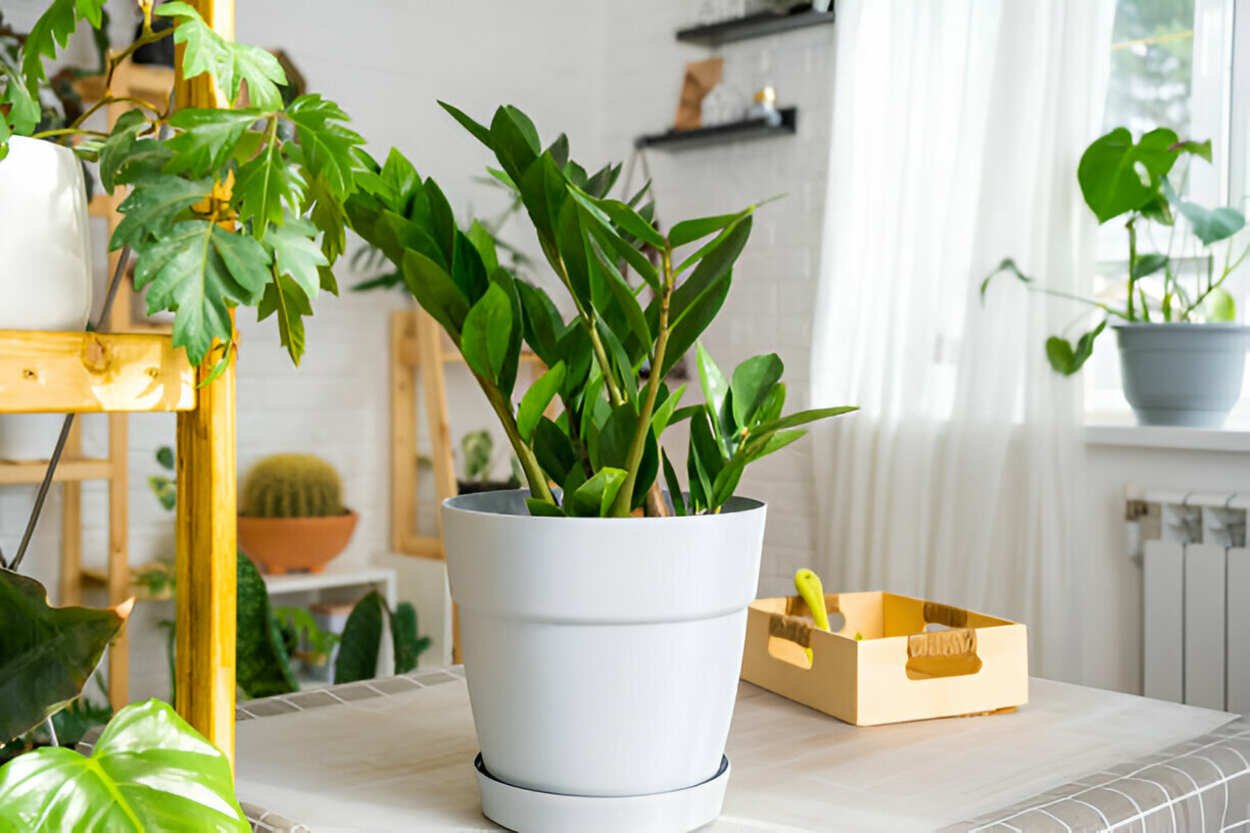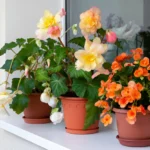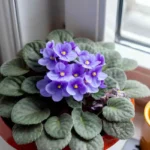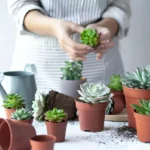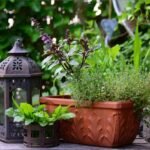Table of Contents
The ZZ plant in my house is named Tokyo. Everyone in my family likes him and even refers to him by name. Tokyo is not very big; it is slightly less than a foot tall. Two more shoots came out a few days ago, and I was very happy to see them. In this post, I will discuss how I care for my ZZ plant and how you can also care for your ZZ plant. Please read our article carefully.
ZZ Plant
The ZZ plant is well known as a low-maintenance and air-purifying houseplant. The ZZ plant has caught the attention of gardeners because of its shiny leaves and easy care. You can keep them anywhere in the house and be safe. Although it is called ZZ plant, its full name is Zamiuculcas zamiifolia. They are perennial and tropical. Because tropical plants are drought-tolerant, they can store water in their stems, roots, leaves, and rhizomes. The plant is hardy and hard to kill, making it the best plant for beginners. Many call them Zanzibar Gem, Air Purify Plant, Juju Plant, Zanzibar Plant, Fortune Tree, and Eternal Plant.
ZZ PLANT History
The ZZ plant is native to East Africa, including Tanzania, Zimbabwe, Mozambique, and Kenya. Dutch nurseries widely propagated them commercially after 1990. Since then, it has become known as a houseplant worldwide. Zamioculcus is a species of the family Araceae.
ZZ Plant: What a beginner should start with
ZZ plant is considered a low-maintenance plant. Even if you don’t know much about these plants, you can still bring them home. They will not ask you for more water, light, and pruning. This plant will be fine if you are out of the house for a few weeks or on vacation. Everyone should start their indoor gardening journey with ZZ plants. The ZZ plant thrives in USDA hardiness zones 9-11.
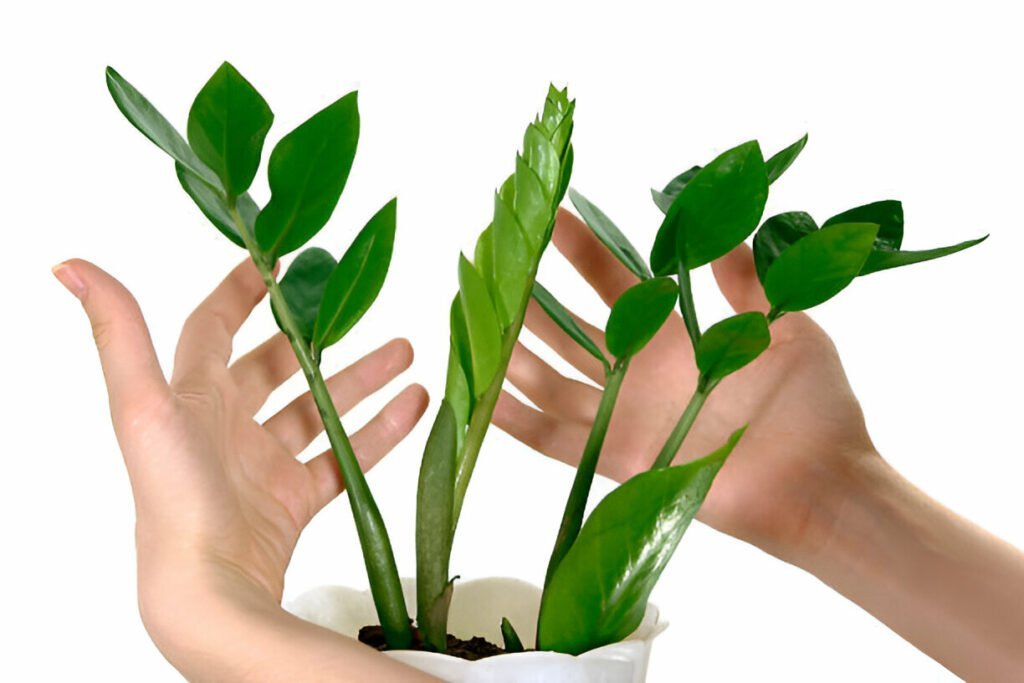
ZZ Plant Benefits
The ZZ plant is also considered a symbol of good luck. They bring auspiciousness to your home. GG plants help purify the air, removing harmful toxins such as formaldehyde, benzene, xylene, toluene, and carbon monoxide. They increase the amount of oxygen in the air and reduce the amount of carbon dioxide. The delicate structure of the ZZ plant makes the plant even more magnificent. No matter where it is placed in a corner of your home, it will increase the beauty of the corner by several folds. The beauty of the desk will be enhanced by placing the desk plant on your office table. Their leaves trap airborne dust and dander, which will help you eliminate allergy problems. Also, the ZZ plant carries more special benefits.
ZZ Plant Care And Tips
I’m not that worried about my home ZZ plant (Tokyo). It doesn’t need as much care as all my other plants. But I do take some simple precautions.
ZZ Plant Tub Selection
ZZ Select tubs with holes in the bottom for the plant. Plastic or clay pots are fine. If there is no leak under the tub, you should refrain from planting ZZ plants in that foot or tub. I prefer a plastic tub as it does not retain moisture, and excess water does not drain through the drainage holes.
ZZ Plant Soil
Preparing or selecting the ideal soil for the ZZ plant is the first step in caring for it. The ZZ plant does not require much water, and its history shows that it is drought-tolerant and comes from tropical regions. With just a few ingredients, you can make the ideal potting soil for it at home.
ZZ Plant soil should be easy to aerate and a drainage medium. It would help if you made it so that the plant’s roots get enough space to breathe and not get too much water. If excess water accumulates, there is a risk of root rot. We never want our tree to start rotting the roots.
We can make a medium with cocopeat, perlite, and fertilizer in a 50:25:25 ratio. You can use any manure, such as cow dung, leaf manure, vermicompost manure, or organic manure, as fertilizer. Cocopeat will retain moisture in the soil, and the fertilizer will provide nutrients for plant growth. Perlite will lighten the medium, retain water, and create air pockets while ensuring air circulation. Plant roots grow rapidly in this medium.
After bringing my plant home, I cleaned the roots and prepared the medium like this. But I used charcoal under the tub to make the drainage system faster and better; you can add it if you want. If you don’t want to use coal, you can use dark or lava rock; they do the same thing.
ZZ Plant Water
ZZ plants are often called cactuses, but some call them that because they can store water by acting like circulates in their bodies. ZZ plants can retain water in their stems, leaves, branches, and rhizomes. They possess this characteristic by nature. You are busy with housework or office work and need to remember to water. This plant will forgive you for your forgetfulness as it does not require regular watering. They are happy if you water them once every 2-3 weeks. In winter, you should water once every 3-4 weeks. Some basic factors involved in plant soil drying are moisture, humidity, moisture, and light.
- Note when watering.
- Test the soil before you water.
- You may test the soil with a moisture meter.
- Check the moisture meter by turning it around.
- Watering should begin at the plant’s base.
- Do not rush while watering; water little by little after 5-10 minutes.
- Stop watering when water starts to come out of the drainage holes.
Note the watering date on the mobile or mark it on the calendar.
Tips
- Check with a moisture meter once every 7-10 days. If one side of the soil is dry, the other is moist.
- Don’t worry.
- Add a little water to the dry side.
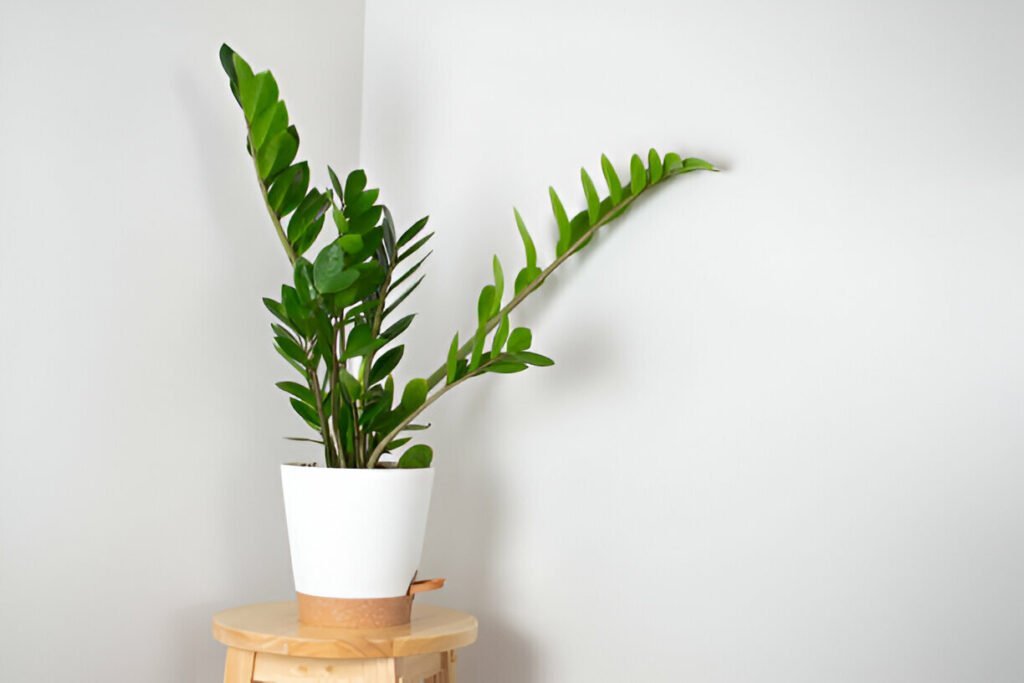
The light
The ZZ plant won’t worry you much about light. You can keep them in a lot of light, you can keep them in low light, you can keep them in a dark room without light. They will be happy too. This is why ZZ Plant is in the best list for everyone.
However, bright indirect light plays a role in their normal growth.
You can keep in the southeast of your house. If placed near the window, sunlight will filter through the glass and reach the tree without harming it. It can be kept in a place that receives light for at least 4-5 hours (bright indirect light).
If your plant is in light, rotate the position of the plant regularly. Rotating the position ensures that all sides of the plant get light and grows at an even rate. If left in one position, one part of the plant receives more light, and the other is less light. The part that will receive less light will move towards the sun and grow longer.
If you have a grow light at home, you can use a grow light for ZZ plants.
Humidity
They do not need as much moisture as other plants. The humidity in your home is enough for them. However, if you want to use a humidifier, you can keep the humidity at 40-50%.
Temperature
They can grow at room temperature, but you need to control the temperature for better growth. Temperatures can be maintained at 60°F to
80°F (15°C to 27°C).
Note: They should not be kept below 45°F (7°C) at any rate, or severe damage to the plant will occur.
Fertilizers
ZZ plants don’t need your regular fertilizer application. You will add fertilizer during their growing period. Fertilizers cannot be applied in the winter season. You can give any fertilizer to the ZZ plant.
If you apply liquid fertilizers, you will give them every two months, and if you give slow-release fertilizers (osmocat), you will give them one or two times a year.
The best time to fertilize is from March to September.
Air circulation
For perfect seepage and growth of ZZ plants, you need to continue to care for them. Choose a well-ventilated area of your room. Place the ZZ plant with the tub to ensure the plant’s ear circulation. You can arrange a small fan if you want.
This will allow the soil to dry out faster after you water the plant and reduce the risk of root rot.
Cleaning Your Z Z Plant
Since the indoor plant lives in your room and the dust in the air collects on the leaves, you need to clean its leaves regularly. You can use a sprayer to clean the leaves. You can use small brushes to clean the dust. You can also wet paper towels and wipe each leaf by hand from the top to the bottom of the plant.
You’ll tidy the front area as well as the undersides of the ZZ Plant leaves.

Pruning and Propagation
Cut off yellow leaves, half-scorched leaves, and excess leaves on your plant.
Take a pruner and clean the pruner before cutting. Now, cut from the base of the part you want to cut.
You can plant seedlings from healthy, vigorous branches and leaves of ZZ plants.
What you need to do for planting
You select the mature leaves of the plant and cut from the very base of the leaf, but be careful not to leave large wounds on the branches of the plant.
You can soak the leaves in a one-time cup with a stick. Once the root is done, you can replace it on medium.
Again, you can make seedlings by placing 1/3 of the leaves directly in the soil.
Seedling preparation time takes about 2-2.5 months.
In the same way, you can plant seedlings from tree branches. But note that it may take more time to seedling from branch. Seedlings from twigs produce more rhizomes than those from leaves.
You can propagate large plants by root cuttings and rhizome division.
Repotting Time
The ZZ plant grows very slowly. They can grow 5/6 inches every 6 months. You should quickly report if the roots come out of the bottom of the tub.
When repotting, replace the tub with a tub that is 1.5-2 inches larger than the previous tub.
Repetition can be done once every two years.
Repotting can also be done at special moments. If your plant has root rot, you should transplant it to another tub and new medium.
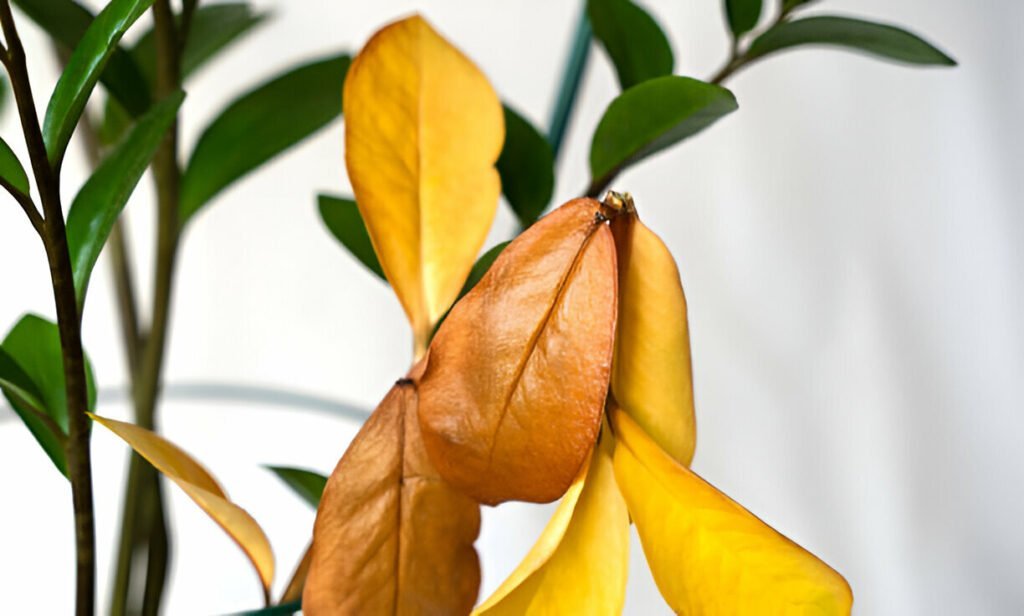
Pets and Action
The ZZ plant is not affected by many insect diseases. However, mealy bugs, aphids, and spider mites sometimes attack.
Check your tree regularly. Turn over the leaves of the plant and see if there are insects nesting anywhere.
Spray insecticides on any moths you see. Dilute with water and spray.
Apply neem oil diluted with water to the plant at least once a month.
Tips: If you don’t have neem oil pesticides at home, you can use detergent or lye at home
Are ZZ plants toxic?
ZZ Plants are toxic. Toxic to children and pets, cats, and dogs. Their leaves and stems produce white pus that can irritate the skin and irritate the mouth. So, experts advise keeping them away from small children and pets at home.
You can hang the ZZ plant on the wall. You can make a shelf on the wall or keep it there if you have a tree shelf. But I think it’s best to keep it out of the reach of small children.
If ingested by small children or pets, seek medical advice immediately.
FAQ
1. Should you take your ZZ plant as a beginner?
I will tell you that you should close both eyes. With ZZ Plant, you can enter the world of gardening. They will be hard to kill as you are new. You will not have the problem of not watering or forgetting. They do well with less maintenance and care. All in all, it is a must-take if you are new.
2. How many varieties of ZZ plants are there?
There are four varieties of the ZZ plant. Zamioculcas Zamiifolia Zamioculcas Zamiifolia Raven Zamioculcas Zamiifolia supernova Zamioculcas Zamiifolia Chameleon
3. Can scale appear in ZZ plants?
If scale occurs, spot zapping with lansoprazole or spraying with an insecticide mixed with water.
4. ZZ Plant Leaves Browning?
Overwatering causes brown leaves. Stop overwatering.
5. ZZ plant flowers indoors?
It is rare to see ZZ plants flowering indoors. But he said yes.
